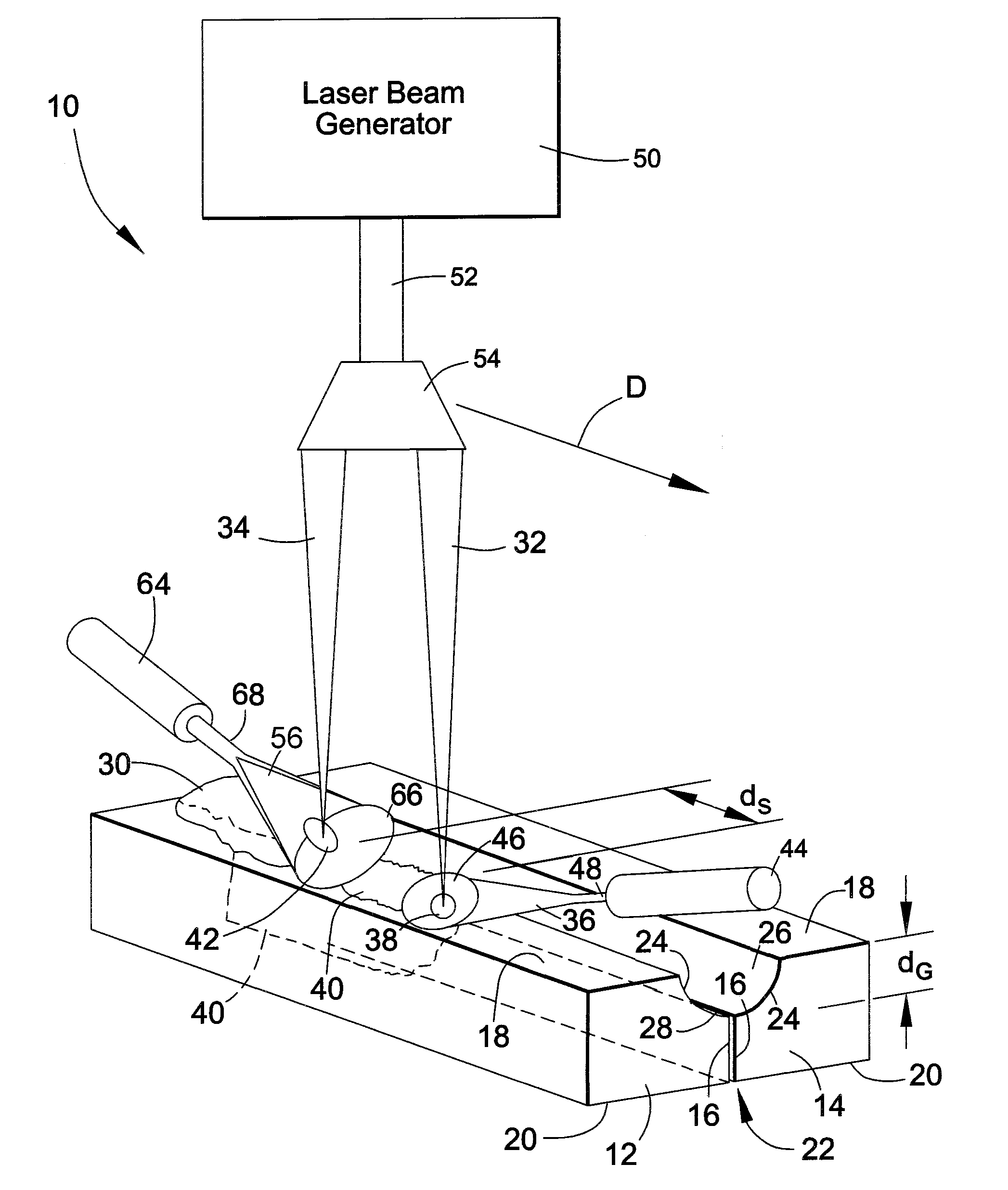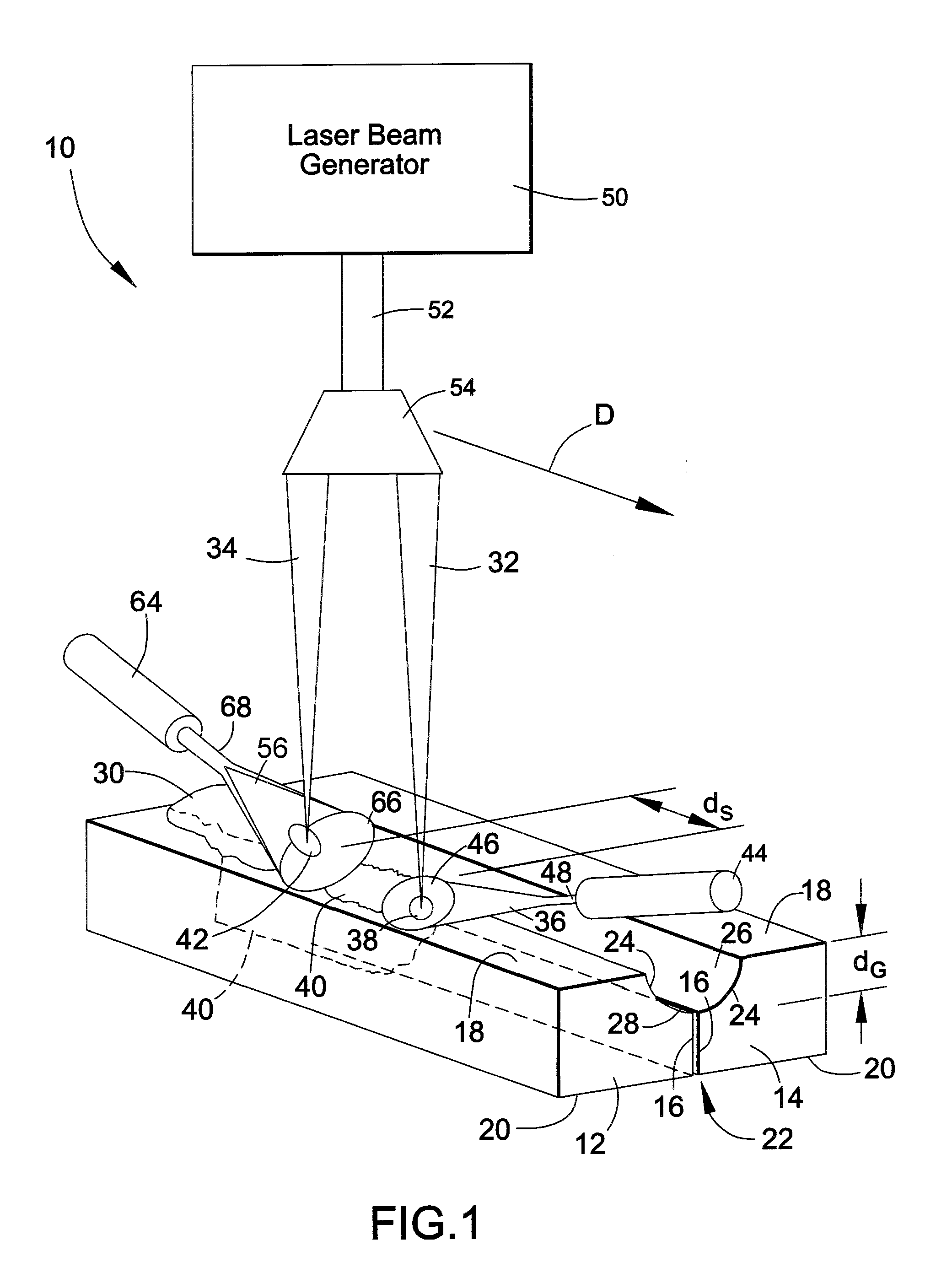Hybrid laser arc welding process and apparatus
- Summary
- Abstract
- Description
- Claims
- Application Information
AI Technical Summary
Benefits of technology
Problems solved by technology
Method used
Image
Examples
Embodiment Construction
[0013]FIG. 1 represents a welding apparatus 10 for conducting a welding process that utilizes multiple hybrid laser arc welding processes. The hybrid laser arc welding processes are performed in sequence, with a first of the processes preferably yielding a relatively deep-penetrating weldment that can be rendered essentially free of porosity as a result of a subsequent hybrid laser arc welding process. The welding process is particularly well suited for fabricating components that require welding at relative thick sections, for example, one centimeter or more, as is the case for fabricating various components used in power generation applications, including the construction of wind turbine towers, as well as components intended for a wide variety of other applications, including aerospace, infrastructure, medical, industrial applications, etc.
[0014]FIG. 1 represents a pair of workpieces 12 and 14 undergoing a multistage welding process of this invention. The workpieces 12 and 14 may...
PUM
| Property | Measurement | Unit |
|---|---|---|
| Length | aaaaa | aaaaa |
| Distance | aaaaa | aaaaa |
| Distance | aaaaa | aaaaa |
Abstract
Description
Claims
Application Information
 Login to View More
Login to View More - R&D
- Intellectual Property
- Life Sciences
- Materials
- Tech Scout
- Unparalleled Data Quality
- Higher Quality Content
- 60% Fewer Hallucinations
Browse by: Latest US Patents, China's latest patents, Technical Efficacy Thesaurus, Application Domain, Technology Topic, Popular Technical Reports.
© 2025 PatSnap. All rights reserved.Legal|Privacy policy|Modern Slavery Act Transparency Statement|Sitemap|About US| Contact US: help@patsnap.com


